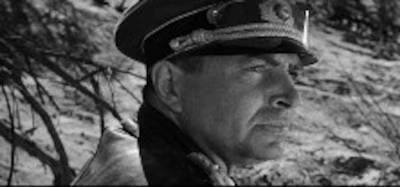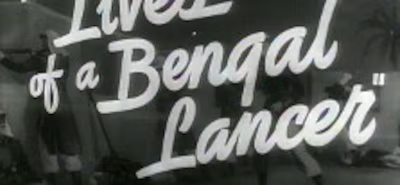Henry Hathaway

About
Biography
Filmography
Family & Companions
Bibliography
Biography
As the archetypal studio professional, director Henry Hathaway spent five decades directing over 60 Hollywood films, leaving behind a large but rather underappreciated body of work that featured frequent collaborations with Randolph Scott, Gary Cooper, Tyrone Power and John Wayne. After getting his start as a child actor and assistant director, Hathaway began directing adaptations of a series of Zane Gray stories before gaining critical attention for the action film "The Lives of a Bengal Lancer" (1935) and the backwoods melodrama "The Trail of Lonesome Pine" (1936). By the time he directed Wayne in "The Shepherd of the Hills" (1941), Hathaway had developed a solid reputation for technically accomplished films while becoming a pioneer of location shooting with a number of quality Westerns. Following the war, he took a dark turn into film noir and innovated further with the used of a semi-documentary approach to such thrillers as "The House on 92nd Street" (1945), "The Dark Corner" (1946) and "Call Northside 777" (1948). Hathaway directed solid films with "The Black Rose" (1950) and "Niagra" (1952), but struggled for the remainder of the decade with interesting, but ultimately forgettable films. He returned to his favored genre with "How the West Was Won" (1962), "The Sons of Katie Elder" (1965) and "Nevada Smith" (1966), while guiding Wayne to his only Oscar with "True Grit" (1969). Though his career came to an end five years later, Hathaway had amassed a solid body of work while earning status as a consummate professional.
Born on March 13, 1898 in Sacramento, CA, Hathaway was raised by his father, Rhoady de Fiennes, an actor and stage manager, and his mother, Jean Hathaway, an actress. He started his career as a child actor for the American Film Co. during the early days of silent films, where he became a protégé of director Allan Dwan. He moved to Hollywood with his mother, where both worked for pioneering mogul Thomas Ince and later Universal Studios. After World War I, Hathaway moved behind the camera and became an assistant director for notable directors like Victor Fleming, Josef von Sternberg, William K. Howard and Frank Lloyd. Of the most notable pictures he worked on at the time were Fred Niblo's version of "Ben-Hur" (1925) and "The Virginian" (1929), starring Gary Cooper. He also had the opportunity to collaborate with a number of top stars like Cooper, Marlene Dietrich, Clara Bow, Fay Wray and Walter Huston. Meanwhile, his first shot at directing came at Paramount Pictures in the early 1930s, where he remade eight stories by adventure writer Zane Grey that had been shot as silent films, often using footage from the originals.
The first film Hathaway made was the Western, "Heritage of the Desert" (1932), starring Randolph Scott. He quickly turned out other Grey adaptations like "Wild Horse Mesa" (1932), "To the Last Man" (1933), "Man of the Forest" (1933), "Buffalo Stampede" (1933) and "The Last Round-Up" (1934), all of which starred Scott in variations of the Western hero archetype. Stepping away from the genre, Hathaway had his first acclaimed success with the craftsman-like action film "The Lives of a Bengal Lancer" (1935), which earned him his only Academy Award nomination for Best Director. He followed up with the musical comedy "Go West, Young Man" (1936), starring Scott and Mae West, and directed the beautifully photographed but dated rural melodrama "The Trail of Lonesome Pine" (1936), with Henry Fonda and Fred MacMurray. After directing Gary Cooper in "Souls at Sea" (1937) and "The Real Glory" (1939), as well as Tyrone Power in "Johnny Apollo" (1940), he made a rather quiet and lyrical Western with John Wayne, "The Shepherd of the Hills" (1941), where the Duke played a young backwoods man contending with a group of outsiders threatening to push him and his family off his land.
In 1940, Hathaway moved over to 20th Century Fox, where he worked almost exclusively for the next 20 years. Following the uplifting war drama "Wing and a Prayer" (1944), he turned to a more semi-documentary a la film noir for "The House on 92nd Street" (1945), which used newsreel footage and dramatic sequences to tell the compelling story of a double agent (William Eythe) who helps shatter a Nazi spy ring in the U.S. After the war, he continued to utilize the style with "The Dark Corner" (1946), a dark and gloomy film noir about an ex-convict (Mark Stevens) framed for a murder he did not commit. From there, he entered a fruitful period with films like the spy thriller "13 Rue Madeleine" (1946) starring James Cagney and "Kiss of Death" (1947), a gritty film noir with Victor Mature and Coleen Gray that stood the test of time as a premiere example of the genre. He returned to his semi-documentary style for "Call Northside 777" (1948), which featured James Stewart as a newspaper reporter who comes to the realization that a man (Richard Conte) may in fact have been falsely accused of murder.
Hathaway went on to direct a number of above-average films that were popular with audiences, but often at odds with critics. He cast Tyrone Power and Orson Welles in the historical epic "The Black Rose" (1950), a sequel to the previous year's "Prince of Foxes" (1949), and turned in a rare comedy with "You're in the Navy Now" (1951), starring frequent star Gary Cooper and Jane Greer. He next helmed the stylized thriller, "Niagra" (1952), which starred Marilyn Monroe as a troubled wife who plans on murdering her disturbed husband (Joseph Cotton). Throughout the rest of the 1960s, Hathaway helmed a number of competent, but rather mediocre films, but still managed to show some cinematic flair in "Prince Valiant" (1954), a beautiful looking mythological adventure that was weighed down by underwhelming performances from James Mason, Vivien Leigh and Robert Wagner. After teaming with Cooper again on "Garden of Evil" (1954), he directed Kirk Douglas in "The Racers" (1955), John Wayne and Sophia Loren in "Legend of the Lost" (1957), and Dennis Hopper in "From Hell to Texas" (1958). The following decade, signs of slowing down manifested in the caper drama "Seven Thieves" (1960) and the been-there, done-that Western "North to Alaska" (1960).
For the Western epic "How the West Was Won" (1962), Hathaway directed three of the anthologized film's five segments, "The Rivers," "The Plains" and "The Outlaws," with the other two helmed by genre masters John Ford and George Marshall. He next turned to literary drama with an adaptation of Somerset Maugham's well-traveled "Of Human Bondage" (1964), featuring miscast stars Kim Novak and Laurence Harvey, and guided Wayne to one of his more interesting turns in the entertaining Western "The Sons of Katie Elder" (1965). With rising star Steve McQueen, Hathaway found the perfect actor to play a man seeking revenge for the murder of his parents in the stark minimalist Western "Nevada Smith" (1966), before churning out underwhelming fare like "The Last Safari" (1967) and "Five Card Stud" (1968). With both their careers winding down, Hathaway and Wayne reunited one last time for "True Grit" (1969), a rather pleasing Western where Wayne played cantankerous U.S. Marshal Rooster Cogburn, who helps a 14-year-old girl (Kim Darby) hunt down the men who murdered her father. Hathaway's expert direction helped guide Wayne to his only Oscar. Meanwhile, the director rode off into the sunset with his last films, "Shoot Out" (1971) with Gregory Peck, the unforgivable "Raid on Rommel" (1971), and "Hangup" (1974). Eleven years later, on Feb. 11, 1985, Hathaway died from a heart attack at age 85, leaving behind a large, but underappreciated body of work.
By Shawn Dwyer
Filmography
Director (Feature Film)
Cast (Feature Film)
Producer (Feature Film)
Misc. Crew (Feature Film)
Director (Short)
Life Events
1908
Film actor with the American Film Company
1918
Served in the military
1932
Film directing debut
Photo Collections
Videos
Movie Clip












Trailer












Family
Companions












